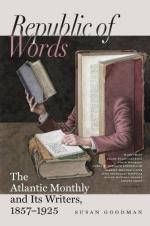And in Paris he has written an able and in many respects admirable treatise,—almost profound, as we have said, and creditable to him and to France. It must be reckoned, we think, a foundation-stone in the literature of the problem of Language.
In five or six pages the theological peculiarities of M. Renan appear. The reader, however, who is most rigidly indisposed to open question on such matters will find these six pages which do not please him a feeble counterbalance to the two hundred and fifty which do.
FOOTNOTES:
[A] Published 1770-71.
[B] Johnson enumerates fifteen.
[C] Many of the bibliographers, even, have omitted mention of it.
[D] Of which the first book was published in 1772. This author is to be distinguished from George Mason, who in 1768 published “An Essay on Design in Gardening.”
[E] Lettre XI Liv. IV. Nouvelle Heloise.
[F] First published in 1766.
[G] Citing, in confirmation, that passage commencing,—“Nunc dicam agri quibus rebus colantur,” etc.
[H] Pp. 177-179, edition of 1802, Edinburgh.
[I] Pp. 166, 167.
[J] See Article of Philip Pussy, M.P., in Transactions of the Royal Society, Vol. XIV.
[K] First published in 1724.
[L] I find him named, in Dodsley’s “Annual Register” for 1771, “Keeper of His Majesty’s Private Roads.”
[M] Loudon makes an error in giving 1780 as the year of his death.
[N] Presented to William Pitt, 1795.
[O] At that day, horse-hoeing, at regular intervals, was understood to form part of what was counted drill-culture.
[P] Returns incomplete.
[Q] In the Quarterly Tables of Mr. Hamilton’s office, as quoted by Professor Chace, the maximum yield at Wine Harbor during the month of September, 1863, reached the almost incredible figure of sixty-six ounces to the ton.



